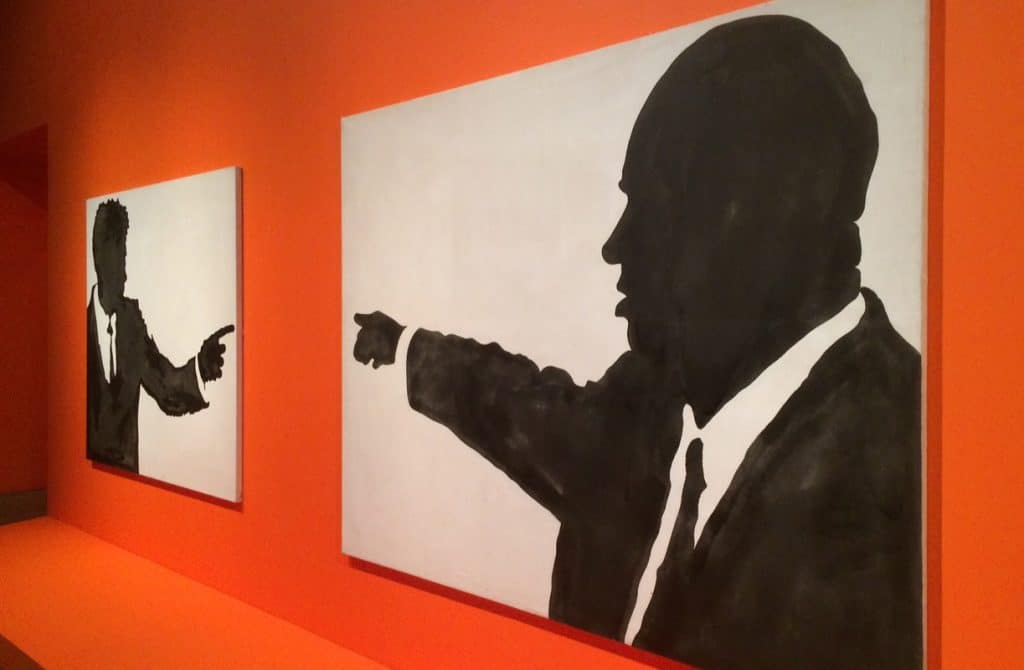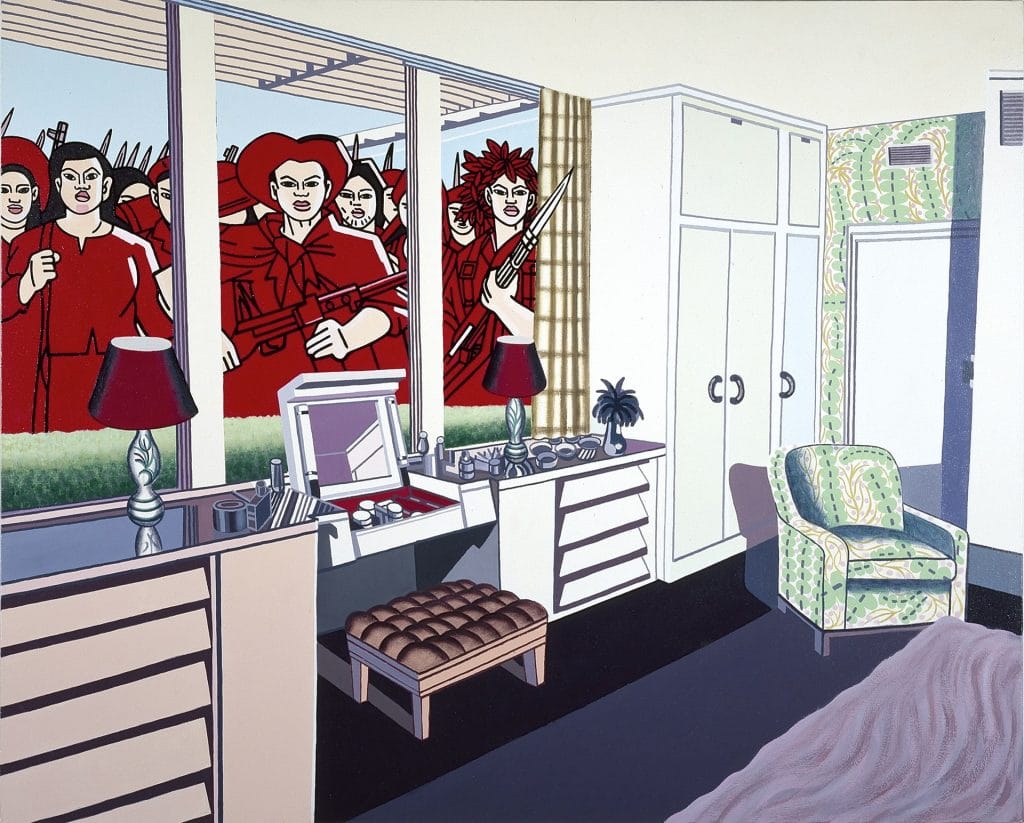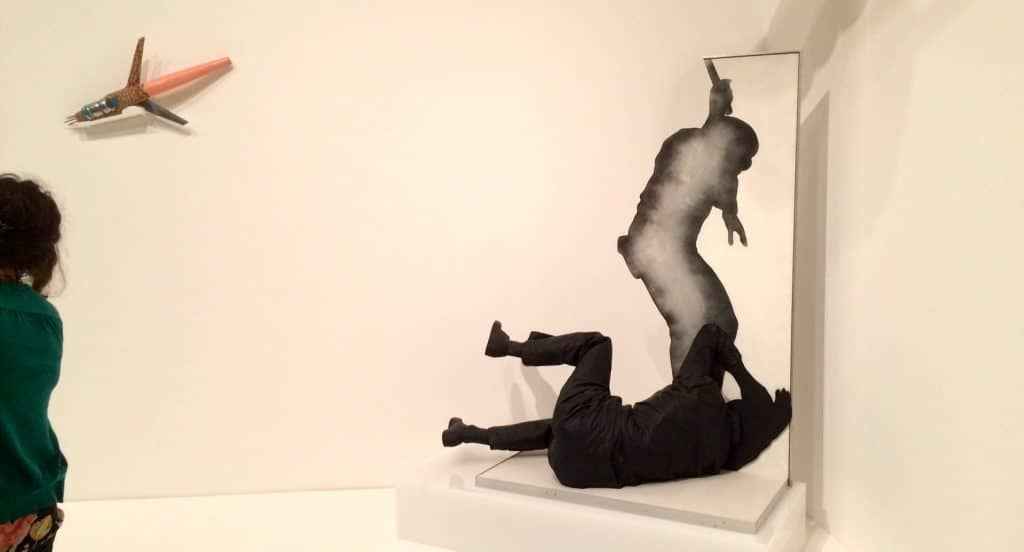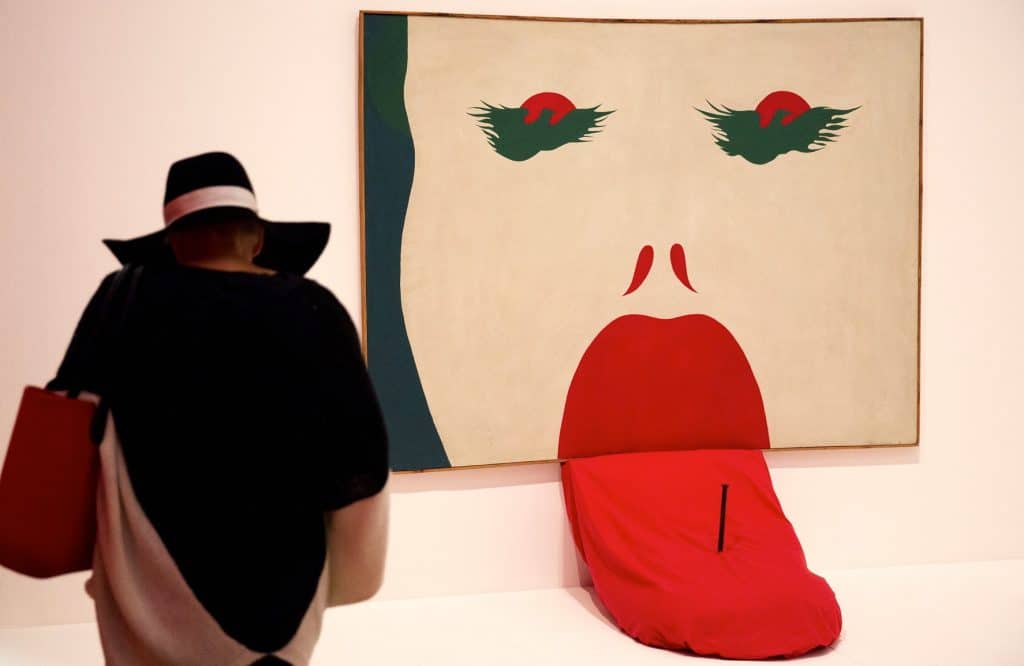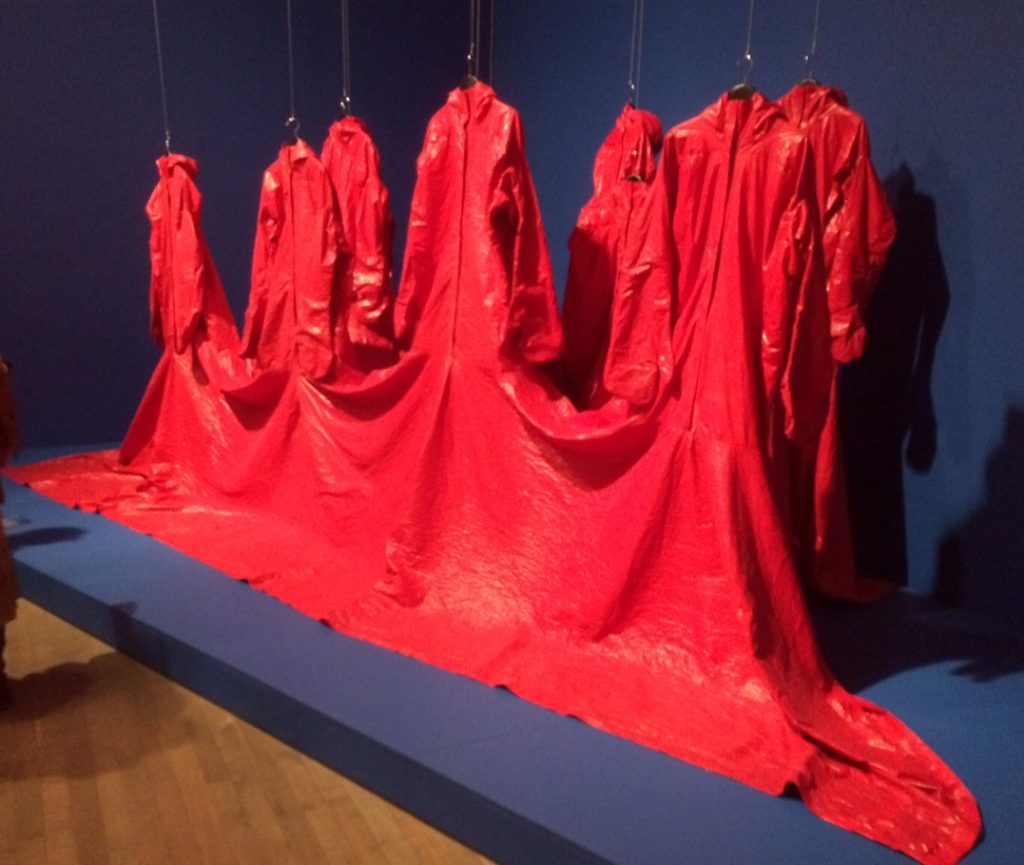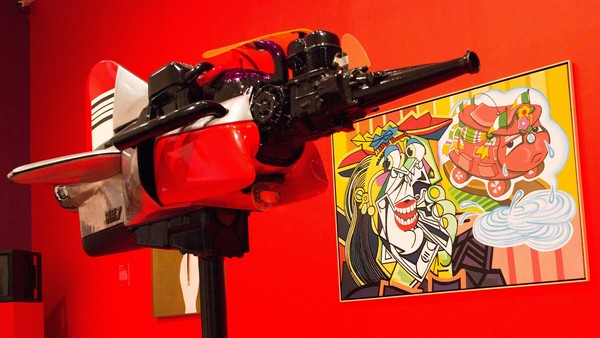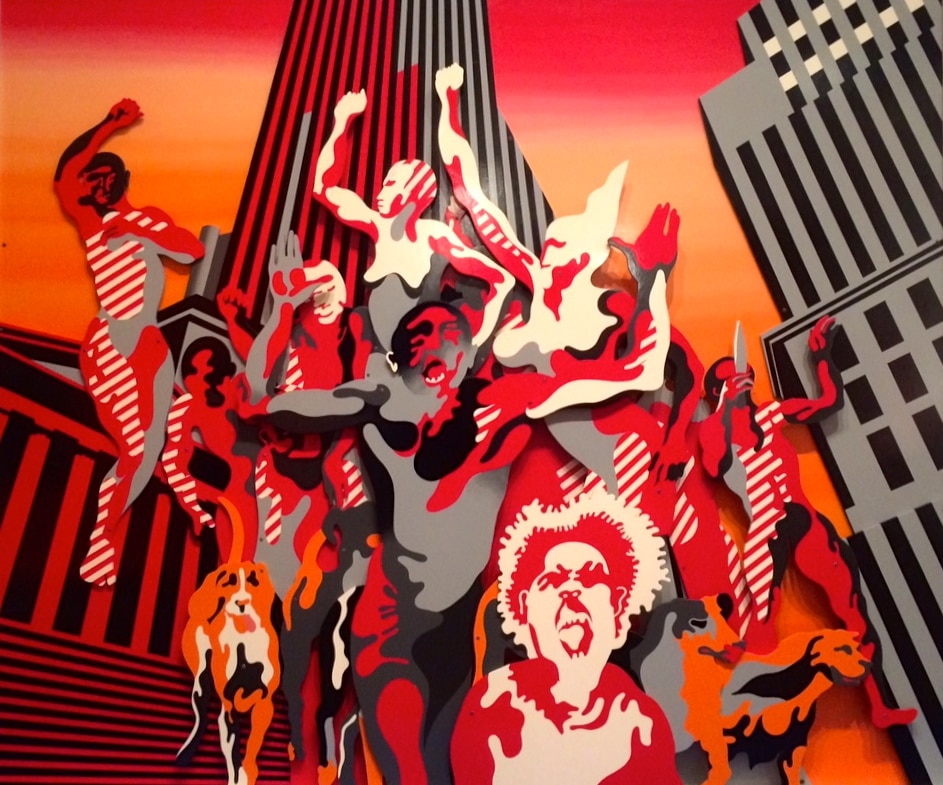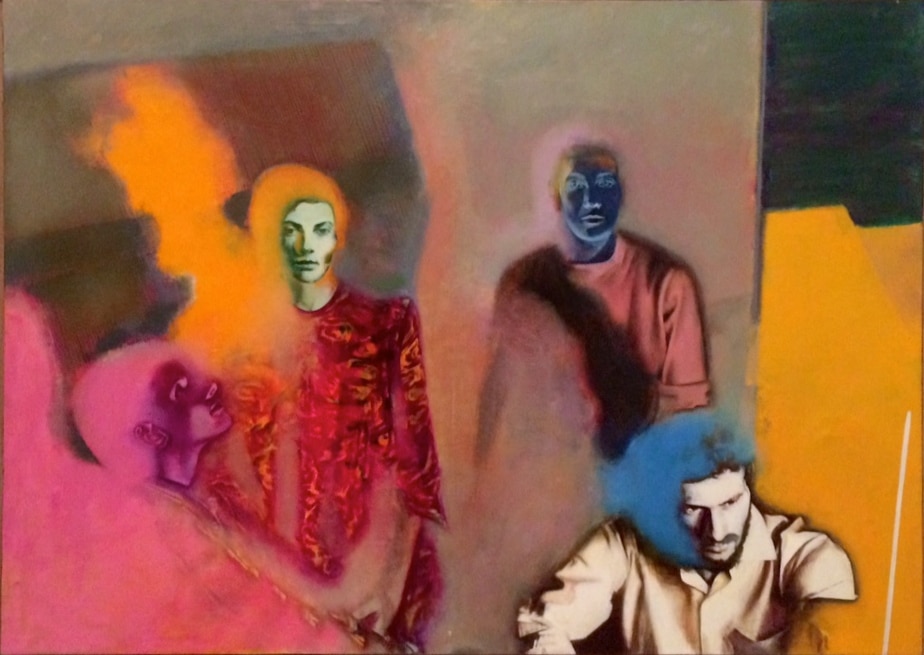This is pop Jim, but not as we know it. There are no Warhol Brillo Boxes, Roy Lichtenstein Whaams or Peter Blake collages to be seen. The key word here is World and here the Tate is attempting to present this movement, usually and primarily seen as a British/American phenomenon, in a wider context by not only gathering works from lesser known European and America artists, but also farther afield.
How many people know that there is Icelandic pop art for example from the excellent Erro where, for example Chinese and Vietnamese troops invade the idealised American home (below) or Cuban ‘folk-pop’ from Raul Martinez?
It is an ambitious show presenting works by over sixty artists from Latin America to the Middle and Far East whilst also presenting a broader narrative for the creation of works considered to be included within the canon of pop art.
In the west pop has traditionally been seen as derived from, and as critiquing consumer and capitalist culture it is here presented as a much broader movement. Public protest, politics, the body, domestic revolution, consumption and folk art are all considered worthy of categorisation and given separate exhibition space in an examination of the broader worldwide movement.
The show, curated by the Tate‘s Jessica Morgan, also goes further in providing a platform for many of women artists who were also involved, and who have perhaps been under-represented in the history of pop art.
The best works here though are American with fetish painted car bonnets from Judy Chicago and Martha Rosler’s clever photo-montages. Nicola L created her iconic ‘Red Coat’ for eleven people to bond come rain or shine, but I’m not sure that Jana Zelibska’s silhouettes were really deserving of their own section and others are hit and miss.
Around the world pop was not just a celebration of western consumerism but was often a subversive international language of protest. Polish artist Jurry Zielinski’s protester for example has their red fabric tongue firmly nailed to the gallery floor, John F Kennedy and Nikita Kruschev face off in a work by Italian artist Sergio Lombardo whilst for the Frenchman Henri Cueco, The Red Men (below), alludes to the government provoked anti communist ‘Red Scare’.
It is an exhibition that only partially succeeds. It succeeds where it expands the narrative of Pop Art but there are occasional substandard works whilst others with dubious pop pedigree are shoe-horned in to make a point. It is also strange that whilst big name British/US artists are excluded others like Colin Self and Joe Tilson or Rosler and Chicago seem to qualify as ‘world’ artists.
Despite these failings it is still a fascinating show that brings a new and more international perspective to the well-worn mantras of pop art theory and is worth a view.
The EY Exhibition: The World Goes Pop at Tate Modern runs until 24 January 2016
For further information visit www.tate.org.uk





